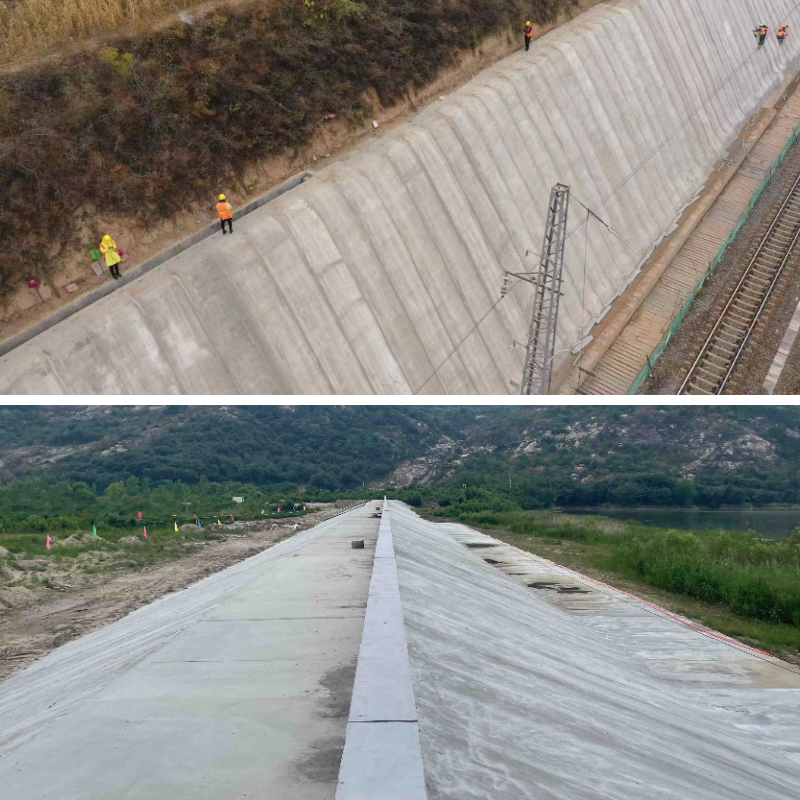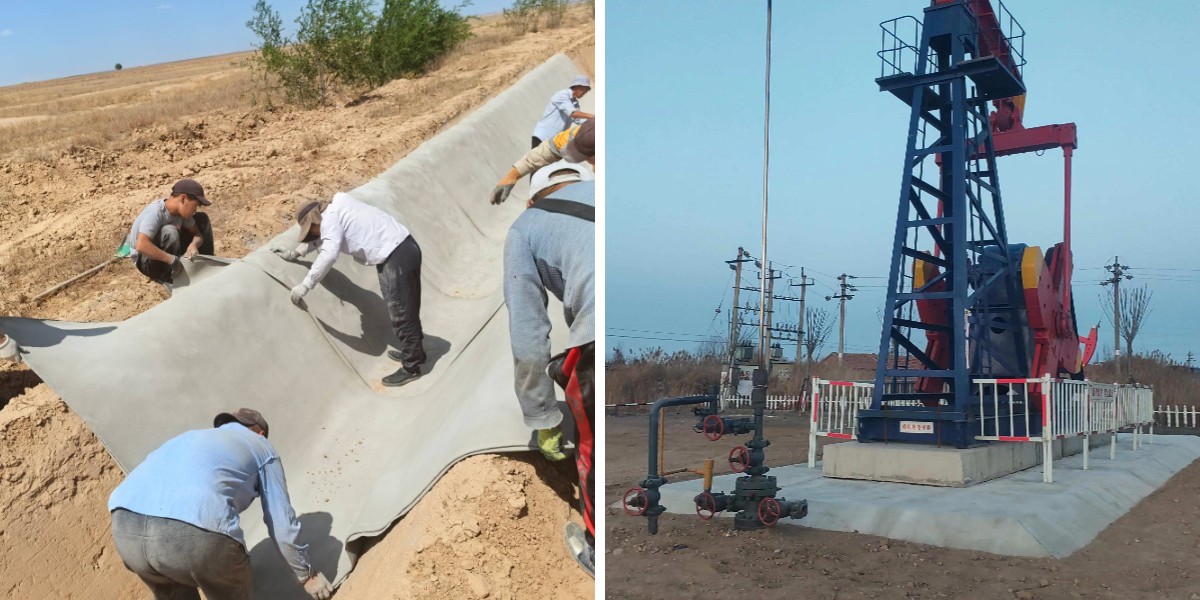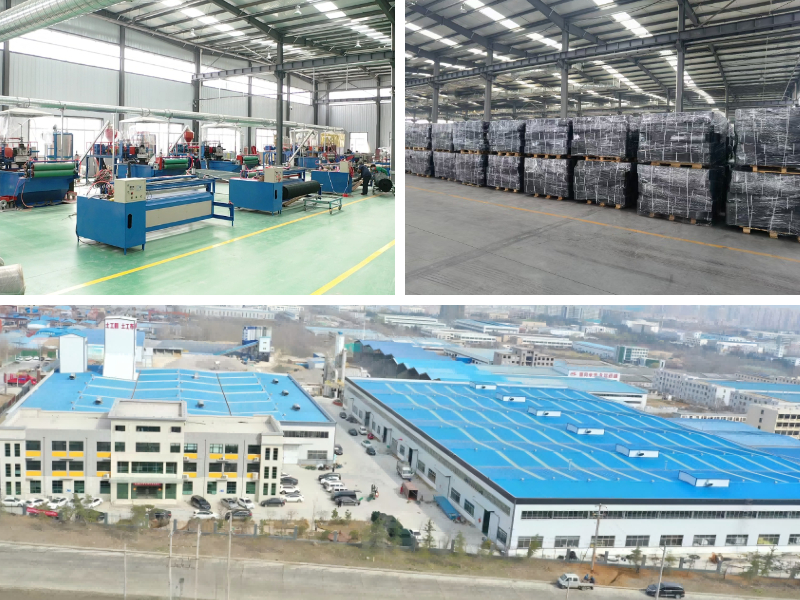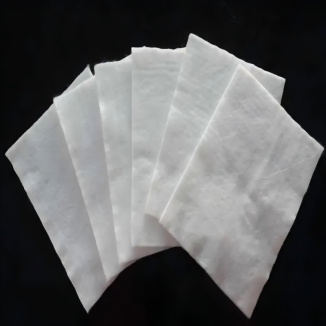Cement Blanket: Uses, Benefits, And How It Works
In the fields of development and infrastructure, innovation often appears in unexpected forms. In recent years, an increasingly popular breakthrough has been cement blankets, also known as cement blanket or flexible concrete blankets. This revolutionary fabric combines the strength of traditional concrete with the flexibility of fabrics, changing all our methods from small DIY projects to large-scale engineering projects. In this article, we will explore the uses, advantages, and internal working principles of cement blankets, with a focus on why they are becoming the preferred solution for addressing modern development challenges, including key applications such as slope protection.
What is a cement blanket?
The core of a cement blanket is a soft fabric fabric mixed with a special mixture of dry concrete. Imagine it as a 'ready to use' concrete solution, delivered in rolls like a heavy carpet. The magic lies in its composition: the fabric serves as the matrix that holds the concrete, while the dry combine harvester remains inert before being activated by water. This layout makes it easy to transport, cut to a certain size, and can be formed on almost any surface - something that traditional concrete cannot match due to its strict mixing and pouring requirements.
You may additionally also hear it referred to as cement blanket or flexible concrete blanket, depending on the producer or region. These terms all describe the same modern product: a cloth that bridges the gap between concrete durability and textile adaptability.
How does a cement blanket work?
The typical performance of cement blankets is very simple, but with careful design, they can acquire the highest efficiency. The following is a step-by-step breakdown of its working process:
Installation: First, unfold the cement blanket and place it on the aiming surface. It can be cut with simple tools such as a universal knife to fit unique dimensions, making it an ideal choice for irregular shapes or narrow spaces. Unlike typical concrete that requires templates and careful pouring, blankets are flat and meet the requirements of the area, whether it is flat ground, curved structures, or steep slopes.
Activation: Once in place, spark off the blanket by spraying water, pouring, or promoting rainfall. Water triggers a chemical reaction in the dry concrete mixture, inflicting it to merge and harden. This technology is equivalent to the traditional concrete solidification method, however there is a key difference: the material matrix ensures that the concrete maintains uniform distribution, prevents cracks, and ensures uniform strength.
Curing: Within the next 24 to forty eight hours, the cement blanket solidifies into a sturdy concrete like structure. The material shell not only concentrates the substances together during the curing process, but additionally acts as a shielding layer, reducing shrinkage and improving durability. The end result is the formation of a strong, seamless barrier that tightly adheres to the underlying surface.
This simple system eliminates many complex problems associated with traditional concrete, such as mixing large quantities of concrete, managing pouring time, and cleaning up messy spills. It changed the game regulations of the project - location, time, labor, or accessibility were all issues.
The main use of cement blanket
Cement blankets have a broad range of applications, from residential DIY projects to industrial scale infrastructure. Here are some of their most common uses:
1. Slope protection
One of the most essential applications of cement blankets is slope protection. Steep slopes, whether natural or man-made, are susceptible to erosion, landslides, and instability, especially in areas with heavy rainfall or turbulent water flow. Traditional solutions, such as rock armor or pouring concrete, are expensive, labor-intensive, and often difficult to deploy on uneven terrain. Cement blankets or flexible concrete blankets solve this problem via closely integrating resources with the slope contour. When activated, they form a continuous, impermeable layer that resists runoff, prevents soil erosion, and reinforces slopes. Their flexibility permits them to adapt to small ground movements without cracking, making them greater durable than rigid alternatives. This makes them an ideal preference for improving the stability of highway embankments, riverbanks, and slopes.
2. Drainage and channel lining
In addition, cement blankets are broadly used for lining drainage ditches, canals, and culverts. Their waterproof properties can prevent water from seeping into the surrounding soil, decrease erosion, and maintain structural integrity. Unlike concrete lining that requires precise pouring and curing, cement blanket can be quickly installed, even in far flung areas. This speed is crucial for emergency repairs, such as repairing damaged drainage structures after a storm.
3. Temporary and emergency structures
In disaster response scenarios, time is crucial. Cement blankets shine here because they can be used to rapidly build temporary shelters, reinforce broken buildings, or construct emergency passages. Their portability means they can be transported to places some distance away from the area, and their fast solidification time (usually within 24 hours) ensures that critical infrastructure is restored or developed in file time.
4. Residential and DIY projects
Homeowners and DIY enthusiasts are also providing cement blankets for small projects. They are very suitable for building garden paths, reinforcing retaining walls, or lining ponds. Easy to install - no need for mixing, no need for heavy equipment - making them suitable for anyone, even those with limited construction experience. Imagine building a sturdy backyard terrace by simply unfolding a blanket (such as water) and letting it solidify: this is the convenience of a flexible concrete blanket.
The benefits of using cement blankets
The popularity of cement blankets is not accidental, as they have many advantages over traditional building materials:
1.Speed and effectivity
Traditional concrete requires mixing, transportation, pouring, and curing, each step adding time and labor costs. The cement blanket eliminates most of these steps. They can be used anytime, connected inside a few hours (not days), and treated quickly. For large-scale projects, this can reduce development time via up to 50%, resulting in significant cost savings.
2.Versatility and adaptability
Whether you are working on flat surfaces, curved walls, or steep slopes, cement blankets can adapt. Their flexibility lets in them to adapt to irregular shapes, while their strength ensures that they operate like standard concrete. This makes them suitable for a variety of projects, from slope protection to small out of doors decoration.
3.Durability and lifespan
Don't let their flexibility deceive you - cement blankets are very sturdy. Once cured, their compressive strength is the same as standard concrete (about 20-30 MPa), allowing them to resist wear, impact, and environmental stress. The material matrix can also reduce cracking, ensuring a longer service life than many traditional solutions
4.Residential and DIY projects
Homeowners and DIY enthusiasts are also providing cement blankets for small projects. They are an ideal choice for creating garden paths, reinforcing retaining walls, or lining ponds. Easy to install - no need for mixing, no need for heavy equipment - making them convenient for anyone, even those with limited construction experience. Imagine building a sturdy backyard terrace by simply unfolding a blanket (including water) and letting it solidify: this is the convenience of a flexible concrete blanket.
5.Environmental friendliness
Cement blankets require less water and generate less waste compared to traditional concrete, as they are reduced to precise sizes. Over time, their durability can also reduce maintenance and replacement, thereby reducing the impact of development projects on the overall environment.
Conclusion
Cement blankets—whether known as cement blanket, flexible concrete blanket, or by their standard name—are revolutionizing the building industry. Their unique combination of flexibility, strength, and ease of use makes them ideal for a broad range of applications, from slope protection to emergency repairs and DIY projects. By simplifying installation, reducing costs, and enhancing durability, they’re proving that innovation in construction doesn’t have to be complicated. Whether you’re a professional engineer or a homeowner searching to tackle a weekend project, cement blankets offer a smarter way to work with concrete. As more industries find out their benefits, it’s clear that this innovative material is here to stay—changing the way we build, one roll at a time.
Contact Us
Company Name: Shandong Chuangwei New Materials Co., LTD
Contact Person :Jaden Sylvan
Contact Number :+86 19305485668
WhatsApp:+86 19305485668
Enterprise Email: cggeosynthetics@gmail.com
Enterprise Address: Entrepreneurship Park, Dayue District, Tai 'an City,
Shandong Province
v









